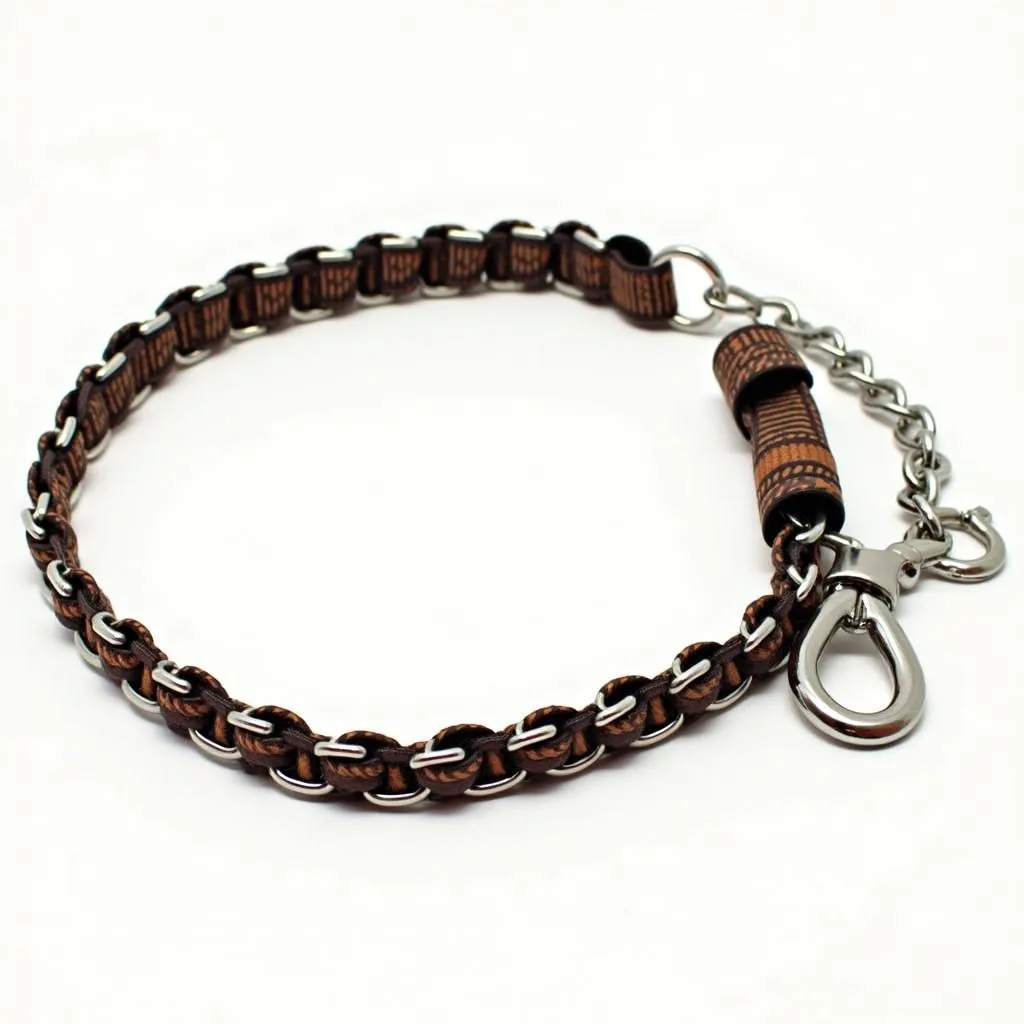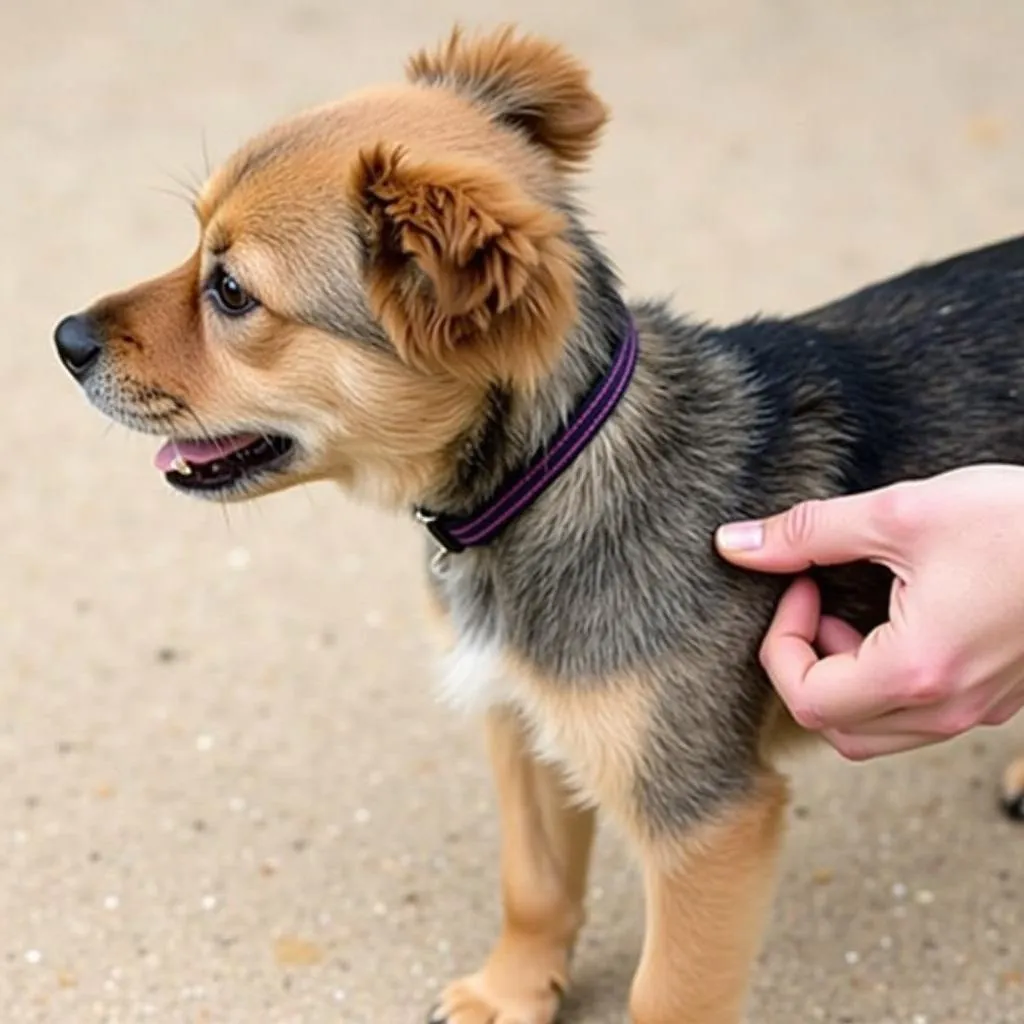“Cái gì cũng có hai mặt” – a popular Vietnamese saying, perfectly reflects the complexity of using a pinch collar for your small dog. While some swear by its effectiveness in training, others see it as a controversial and potentially harmful tool. So, what’s the truth?
What is a Pinch Collar?
 Small dog pinch collar: a training tool
Small dog pinch collar: a training tool
A pinch collar is a training tool used to help dogs learn to walk politely on a leash. It works by applying pressure to the dog’s neck when it pulls, creating a sensation that discourages the unwanted behavior. It’s generally used in conjunction with positive reinforcement training methods.
Why Do People Use Pinch Collars?
Many pet owners use pinch collars because they find them effective in quickly correcting pulling behavior. The immediate pressure sensation can act as a deterrent, teaching the dog to associate pulling with discomfort and thus discouraging it.
Are Pinch Collars Safe for Small Dogs?
This is where the controversy comes in. While some professionals argue that properly used pinch collars can be safe for small dogs, others advocate for alternative training methods. The key concern is that improper use can lead to injuries, including neck pain, trachea damage, and even choking.
How to Use a Pinch Collar Responsibly
Remember, the most important thing is to always prioritize your dog’s well-being and safety. Using a pinch collar requires expertise and careful handling. Here are some crucial tips:
Choosing the Right Size
 Small dog pinch collar size guide
Small dog pinch collar size guide
- Size Matters: Choose a collar that fits your dog snugly, allowing two fingers to fit comfortably between the collar and their neck.
- Gentle Application: Avoid pulling on the collar or using force.
- Short-Term Usage: Only use the collar for short periods during training sessions.
- Positive Reinforcement: Pair the collar with positive reinforcement techniques, such as rewarding desired behavior.
Alternatives to Pinch Collars
It’s crucial to remember that there are many alternative training methods that can be just as effective, if not more so, than a pinch collar. These methods include:
- Head Halters: These harnesses are gentler on the dog’s neck and redirect their body when they pull.
- Positive Reinforcement: This approach uses rewards and praise to encourage good behavior.
- Clicker Training: This method combines positive reinforcement with a clicker sound to mark desired behaviors.
Finding the Right Training Method for Your Dog
Ultimately, the best training method depends on your dog’s individual personality, age, and learning style. Consulting a professional dog trainer can help you determine the best approach for your furry friend.
When to Seek Professional Help
“A good dog is a well-trained dog,” as the old saying goes. It’s always a good idea to consult a professional trainer if you’re experiencing difficulties with your dog’s behavior or if you’re unsure about using any type of training tool.
Conclusion
Whether you decide to use a pinch collar or choose a different training method, remember that consistency and patience are key. Start with basic commands like “sit” and “stay” and gradually introduce more complex tasks. Remember to praise your dog for their progress and celebrate their successes!
For more tips and advice, check out our other resources on dog training or contact us for personalized assistance.
Leave a Reply
You must be logged in to post a comment.